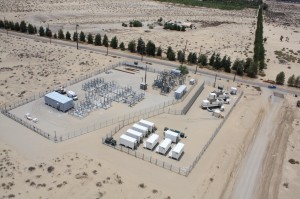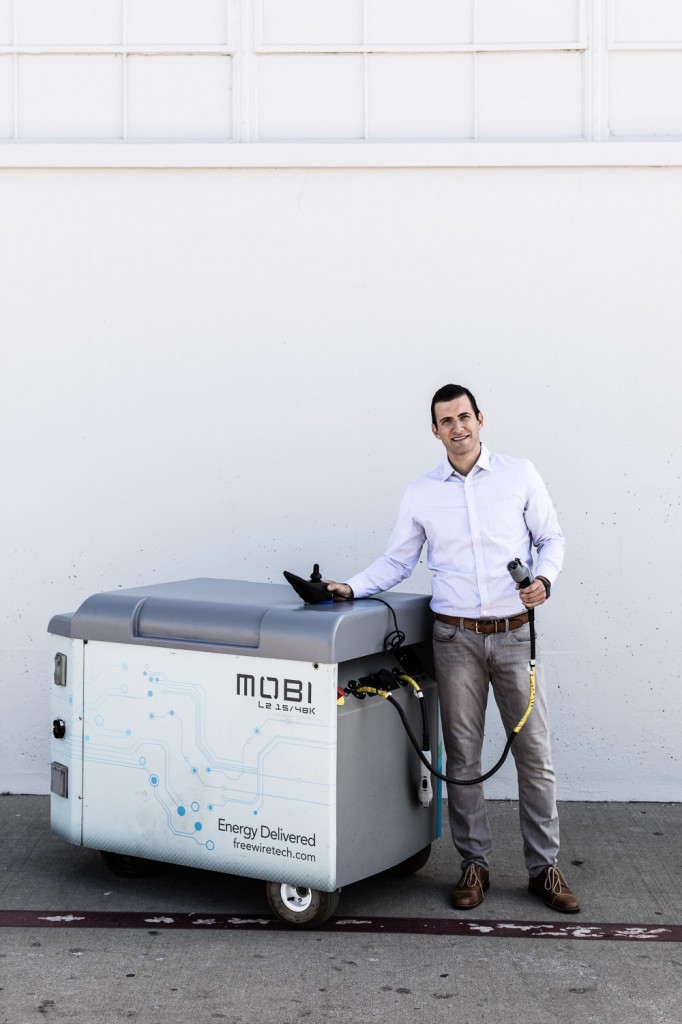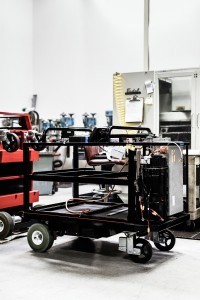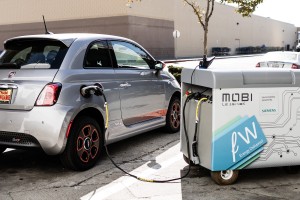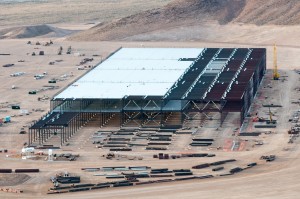If there’s one area where Trump is likely to have legislative success, it’s probably the budget and taxes. A partisan majority of Republicans in Congress will go along with any tax and spending cuts, leaving Trump in a good position to get his way. And his current budget proposal is nothing less than a full-scale assault on environmental protections and public health.
It’s a bad combination of Trump’s seemingly genuine antipathy to government regulations and his party being captured by big polluters in the oil and gas industry.
My UC Berkeley Law colleague Dan Farber runs through the numbers on Legal Planet, but they basically include massive cuts to environmental enforcement, restoration and monitoring, including on climate data, as well as eliminating research in clean energy.
The last part on clean energy cuts is particularly frustrating. I’ve blogged before about the success of ARPA-E, the most important governmental agency you’ve never heard of. It’s the “moonshot” agency that is funding breakthrough technologies in batteries, solar power and other vital technology. Since 2009, it has provided $1.3 billion in funding to more than 475 projects, of which 45 have then raised $1.25 billion in private sector funds.
So of course Trump and his allies want to eliminate the agency completely.
But all is not yet lost. The budget will go through a lot of sausage-making in Congress, and even many Republicans are invested in some of these programs, given the benefits they provide their districts.
But environmental and public health advocates will be starting from a tough position, and this is one area where Trump is likely to get a lot of what he wants.
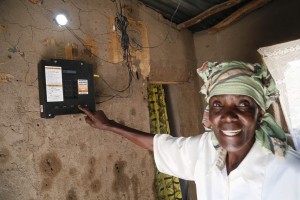
Elizabeth Mukwimba is a 62-year-old Tanzanian woman who now has solar lighting and electricity in her home at the flick of a switch, thanks to an off-grid project. Photo from Off-Grid Electric.
Tanzania exemplifies so much of the future of energy infrastructure in developing world countries, as Greenbiz describes:
The East African country of Tanzania faces a serious electrification challenge. Only 2 percent (PDF) of rural households have access to electricity, and most of the rural population relies on expensive, hazardous and low-quality fuels such as kerosene for lighting and charcoal for cooking.
Access to electricity and other modern energy services is fundamental to human well-being and to a country’s social and economic development. In many countries, electrification through off-grid applications has become a cost-effective alternative to conventional grid expansion in remote areas — and this could become a model that propels Tanzania’s next phase of economic growth. Already in the country, energy systems based on wind, small hydropower, biomass and solar resources are being used successfully to meet energy demand in isolated villages. By integrating these renewable-powered off-grid systems, rural communities are increasing their access to affordable energy supplies while contributing meaningfully to climate change mitigation.
Much like the leap to cell phones over landlines, many countries like Tanzania are better served going directly to decentralized, renewable technologies rather than building expensive and dirty traditional power grids with central-station power plants and far-flung transmission lines.
The upside is a cleaner, more resilient energy system with potentially few impacts on the land. It also means more immediate electrification for rural residents, rather than making them wait for government and utilities to build a centralized grid to reach them.
I note that in this article, batteries do not seem to be on the table for Tanzania’s rural areas, while biomass may make up a crucial portion of the electricity mix. I have nothing against biomass in concept, but depending on the technologies and incentives involved, it can sometimes lead to increases in emissions.
These opportunities in many ways come from the developed world’s investment in renewable technologies, which has brought prices down to the point where they are now viable options for poorer countries like Tanzania.
As the price of solar panels and batteries decreases, our electricity system is starting to look a lot cleaner and more decentralized. While some people think the rise of community-based electricity technologies will undermine utilities, utilities are in fact embracing one version of decentralized power: microgrids.
Utilities are finding microgrids to be a great resilience strategy for avoiding outages, particularly in rural areas or crucial population or job centers. Greentech Media reports on the trend:
San Diego Gas & Electric delivers power to the town of Borrego Springs via a single radial transmission line running through the desert. Lightning strikes and desert flash floods threaten that line, resulting in historically poor reliability, Chief Engineer Thomas Bialek explained at the DistribuTech panel.
The utility needed to maintain or improve reliability for the nearly 2,800 Borrego Springs customers, but the traditional fix — building out a parallel transmission line — was pricey. A microgrid would be three or four times cheaper, Bialek said. So that’s what they did.The system, paid for by SDG&E, the Department of Energy and other partners, combines diesel generators, large and small batteries, and rooftop solar PV.
The microgrid has already proven itself in the face of adversity. When a flash flood in September 2013 downed transmission poles and lines leading to the town, the microgrid fired up and restored power to 1,056 customers while the grid repairs unfolded. That covered the core city center, so that those residents who didn’t have power yet could move to central facilities for shelter from the heat.
The future portends even more investment in microgrids, as Utility Dive notes:
Last year, GTM Research estimated there were 156 operational microgrids in the country, making up 1.54 GW of capacity, and that number is expected to rise to 3.71 GW by 2020. Globally, Transparency Market Research believes the microgrid market will be worth about $35 billion by 2020 — up from $10 billion in 2013.
But as microgrids — and the technologies that underpin them — become cheaper, utilities may be sowing the seeds of their own destruction. With a few additional breakthroughs, these technologies could eventually allow entire communities to defect from the grid, leaving utilities and their remaining ratepayers stuck with stranded assets.
But for now, these installations will provide an environmental and energy win, while furthering investment in the technologies needed to clean and decentralize the electricity sector.
No clean technology is more important than the battery (or energy storage more broadly, given that batteries are just one — albeit critical — version of storage). Batteries will soon help power almost all of our vehicles with cleaner electricity instead of fossil fuels. And they’ll help store our surplus renewable power to clean our electricity grids.
The PBS show NOVA just ran a fascinating episode on the subject, called The Search for the Super Battery. It features interviews with UC Berkeley colleagues Dan Kammen and Venkat Srinivasan, as well as car company representatives and other industry leaders. As far as shows on batteries go, this one is pretty fascinating and accessible and well worth the watch:
Happy Friday viewing!
Repurposing used EV batteries offers the promise of cheap energy storage, which brings significant environmental and economic benefits for customers, ratepayers and utilities. Repurposed EV batteries also have the additional benefit of providing a revenue stream for EV owners and manufacturers, as well as a chance to avoid the environmental impacts from recycling the batteries prematurely.
Freewire Technologies represents one of the leaders in this field, and I had an opportunity this week to visit their office in San Leandro and discuss the future of the business with CEO Arcady Sosinov.
Freewire takes used Nissan LEAF batteries (and other batteries), tests them for quality, and then repackages the battery modules to fit on a mobile unit called the “Mobi” (see photo to the left). The Mobi batteries are wired together and then packaged for delivery.
The initial market for the Mobi was for mobile EV charging, either Level 2 or fast charging (see photo below). Companies with a Mobi give their employees and visitors the option to charge their vehicles without having to move to a fixed charging spot. The company also doesn’t have to trench wiring to install such a charger.
Meanwhile, when the Mobi is re-charging, it can serve as stationary storage to either charge more cheaply at night for daytime dispatch or potentially offset demand charges. At peak times, property owners can dispatch stored electricity in the Mobi instead of pulling more expensive electricity from the grid.
Recently, other companies have purchased Mobis to replace diesel generators, particularly film and television studios that are shooting off-site. The Mobis are cleaner and quieter and have more reliable power. Utilities have also been buying Mobis as distributed storage to ease usage on congested substations. In addition, some cities have purchased them as backup power units in case of power outages that can also provide grid services when plugged in. Even airports have been buying Mobis to charge the onboard electronics on airplanes without polluting generators on the tarmac.
Ultimately, the sky is the limit for the use of these inexpensive, mobile energy storage units. And as thousands of used EV batteries come out of cars in the coming years, the supply increase will bring down costs and lead to even more innovation.
Arcady is currently expanding his business to meet the growing demand and supply, with plans to fill out a much larger space in his building. He’s bullish about the opportunities, particularly with increasing battery supply and growing recognition of the need for cleaner energy sources, particularly in polluted air districts.
Policy barriers definitely remain, as well as questions about how well the batteries will perform in operation over the long term. We detail some of the policy needs in the UC Berkeley/UCLA Law report Reuse and Repower. But as more companies invest in the opportunities, and innovation continues with companies like Freewire, the constituencies and pressure to change outdated laws and regulations that stymie repurposed battery deployment will only grow.
And that’s good news for Freewire and the industry in general, which is poised to be an important part of our energy storage future.
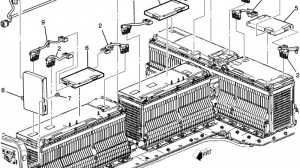 Used EV batteries — when they’re no longer able to store enough energy for driving but still have a lot of capacity left — seem like a great energy storage solution. After all, it’s cheap storage that could be used for all sorts of purposes, from backup power to bulk grid storage when multiple batteries are stacked.
Used EV batteries — when they’re no longer able to store enough energy for driving but still have a lot of capacity left — seem like a great energy storage solution. After all, it’s cheap storage that could be used for all sorts of purposes, from backup power to bulk grid storage when multiple batteries are stacked.
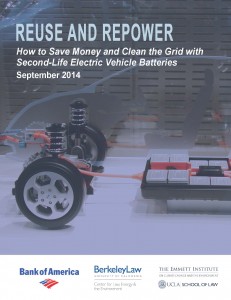 I’m personally bullish on the opportunities and have blogged about all the investments going on in demonstration projects. I also authored a report for UC Berkeley and UCLA Law schools on the potential: Reuse and Repower: How to Save Money and Clean the Grid with Second-Life Electric Vehicle Batteries.
I’m personally bullish on the opportunities and have blogged about all the investments going on in demonstration projects. I also authored a report for UC Berkeley and UCLA Law schools on the potential: Reuse and Repower: How to Save Money and Clean the Grid with Second-Life Electric Vehicle Batteries.
But Charged EVs now reports on a new Lux Research study that thinks recycling will make more sense than repurposing:
In “Reuse or Recycle: The Billion-Dollar Battery Question,” Lux says that reusing batteries from EVs “will deliver questionable returns due to reduced performance, limiting them to applications with less frequent and shallower depth of discharge cycles.”
Lux forecasts that, in 2035, 65 GWh worth of used EV batteries will come on the market each year. An oversized 11.2 kWh residential storage system made from second-life batteries will cost about $4,600, compared with $6,000 for a new 7 kWh system. However, reduced round-trip efficiency and cycle life make a second-life system a poor fit for residential units and other daily cycling applications.
It’s an open question to some extent. But the bottom line is we really don’t know how the batteries will perform. They may maintain their diminished second-life capacity for a long time. Or they might be easily repaired to boost cycle life and durability.
Furthermore, we don’t know all the different uses for these batteries. Even if the batteries aren’t great for deep discharge and regular use, there could be many applications involving less usage, from backup power to bulk aggregations that put less strain on any one battery in the chain. Ultimately we’ll need to see how the market responds and innovates.
Studies like these will therefore be more meaningful once we get data on some of these ongoing demonstration projects. Otherwise, it’s premature to make an assessment either way.
Most electric utilities hate rooftop solar. When a customer installs solar on their roof, it means fewer sales (and therefore revenue) for the utility. It also means more unpredictable and dispersed sources of power from rooftops everywhere. As a result, many utilities across the country have been trying to kill state rooftop solar incentives for years.
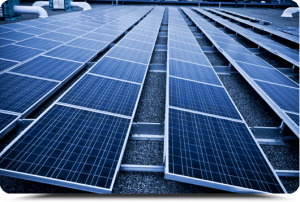 I’ve covered the battles in states like California, Hawaii and Nevada on this blog. The short of it is that California has slightly decreased their incentives for rooftop solar, in the face of declining prices and concern about utility costs; Hawaii has retrenched significantly but in turn created a new market for home batteries + solar; and Nevada brutally ended their incentives a year ago, leaving even existing solar customers without incentives that they had relied on when they bought their panels.
I’ve covered the battles in states like California, Hawaii and Nevada on this blog. The short of it is that California has slightly decreased their incentives for rooftop solar, in the face of declining prices and concern about utility costs; Hawaii has retrenched significantly but in turn created a new market for home batteries + solar; and Nevada brutally ended their incentives a year ago, leaving even existing solar customers without incentives that they had relied on when they bought their panels.
But the end of 2016 brought some significant updates for Nevada and now a new state, Arizona. First, as Greentech Media reported, Nevada regulators have restored the incentives for customers in the northern utility service territory (after having previously given into public pressure and restored the incentives for existing customers to “grandfather” them in).
But Arizona regulators have decided to jump off the rooftop solar cliff, killing existing incentives (which involve a full retail credit for every surplus kilowatt of electricity generated by the panels and not used on-site). Instead, solar customers in Arizona will be eligible for a vastly reduced and unpredictable “export rate” for any surplus electricity generated. As the Arizona Daily Star described:
The export rates will be determined in each utility rate case and will initially be based on a “resource comparison proxy” based on a weighted, five-year average cost of power from utility-scale solar farms.
The new export rates will vary by utility and be stepped down annually, in increments limited to 10 percent each year.
Solar industry advocates are already predicting that their industry will die in Arizona, as they correctly predicted would happen in Nevada after incentives were killed there, too.
Once those jobs disappear and Arizonans realize what they’ve lost, especially given that the state was otherwise one of the best-selling markets for solar with its abundant sunshine and high air conditioning bills, expect major political pushback. I wouldn’t be surprised if we see a Nevada-like reversal in the coming year or so.
In the meantime, the big winner could be battery companies like Tesla. Per Bloomberg, as the company “flipped the switch” yesterday on its gigafactory in Nevada, it will potentially have a new market to sell its product.
Why? Because if solar customers in Arizona aren’t going to get paid much for their surplus energy anymore, they’ll be interested in a cheap battery that can store that surplus and help them use all of it on-site. The battery therefore allows them to effectively recreate that full retail credit they used to get under the old system: any electricity they would have had to purchase from the utility when the panels weren’t producing or producing enough, they can now get from their battery.
So while states lurch around on their rooftop solar policies, the long-term trend seems clear: the incentives are decreasing, and cheaper batteries will be filling that void.
I’m a big believer that islands will lead the way in decarbonizing the economy. Many of them have ample renewables resources, such as geothermal on Hawaii’s Big Island and Iceland, wind and hydro on Kodiak Island, and solar energy on other Hawaiian islands.
Now, on the heels of the big Tesla-SolarCity merger, the American Samoa island of Ta’u used the companies’ products to go 100% renewable. As the Washington Post reported, the island’s leaders wanted to stop depending on expensive, imported diesel fuel to generate electricity:
“[They] basically just put out a solicitation to see if anybody could provide an alternative to diesel, and that’s something that we responded to,” said Peter Rive, co-founder and chief technology officer of solar provider SolarCity, which was recently acquired by Tesla.
The result is a system composed of more than 5,000 SolarCity solar panels and 60 Tesla Powerpack battery storage systems. The new microgrid could save the island nearly 110,000 gallons of diesel fuel each year, which amounts to about 2.5 million pounds of carbon dioxide emissions, according to data from the U.S. Energy Information Administration.
The microgrid is already up and operating, according to Rive, and covering about 99 percent of the island’s power needs. The battery system can provide three full days of power to the island without sun, he added. And it can fully recharge in seven hours of sunlight.
It may have been easier for this island to go 100% renewable compared to other places, given its ample sunshine and small population. I’m assuming the island lacks energy-intensive industries as well. But the lessons can be applicable to other islands and economies, particularly when you factor in other generation technologies, like wind and hydropower.
Now if Ta’u just switches to all battery-electric vehicles, they’ll pull off the full eco-paradise.
It’s official: Tesla shareholders approved a merger with SolarCity. Despite financial analysts’ concerns, the basic concept makes sense: electric vehicle drivers will want solar panels to make fueling the vehicle at home cheaper. Solar customers will be interested in electric vehicles because they already have cheap fuel at home. So there are big marketing/customer acquisition benefits.
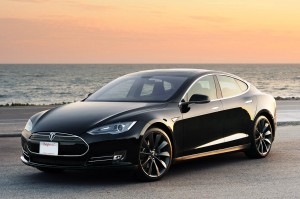 But more importantly, as rooftop solar sales decline and state regulators pull back on incentives, batteries will be crucial to keep solar competitive. Why? Right now most rooftop solar customers use the grid as their battery. I have panels on my home, for example, and when I have surplus electricity in the summer, I export to the grid and get a retail credit for that surplus. I then apply that retail credit to my grid usage in the dark winter months, and “true up” after a full year accounting.
But more importantly, as rooftop solar sales decline and state regulators pull back on incentives, batteries will be crucial to keep solar competitive. Why? Right now most rooftop solar customers use the grid as their battery. I have panels on my home, for example, and when I have surplus electricity in the summer, I export to the grid and get a retail credit for that surplus. I then apply that retail credit to my grid usage in the dark winter months, and “true up” after a full year accounting.
But regulators are doing away with that bargain already in places like Hawaii and Nevada. Soon new solar customers are going to need an actual battery to store their surplus solar. It would be the same model that I have, but you no longer need the grid to store your electricity, and you don’t need regulators requiring utilities to do so. Instead, with a big enough battery, you capture and use all your solar energy on site.
The one question I have is whether the economics are still good enough to encourage people to purchase both a battery and solar array. I doubt a typical Tesla home battery will be big enough to capture all the surplus energy in the summer months, meaning some power will be lost that the grid would otherwise have used. But as battery and solar prices decrease and electricity rates increase, the deal could be good enough.
Either way, the merger represents a sea change in our electricity system, packaging transportation and home energy use in a way we’ve never seen. If all goes well for the company, Tesla could one day become a monopoly like we’ve never seen, with a gas station, utility, and car company all rolled into one.
On Friday, Elon Musk unveiled a way to make solar panels as sleek and cool as Tesla has made electric cars. You can watch the video above, but it’s hard not to feel like this is the future of solar panels. The panels are broken down into tiles that (according to the video and photos) look pretty much exactly like real roofing material. According to Musk, they are also supposedly sturdier than everyday roofing material. In short, there’s no negative aesthetic impact from the panels, while you get a better roof in the process.
 You can see photos here from Tech Crunch. And here’s the slate tile model, in the photo on the right. As you can see, it’s hard to tell that there’s any solar PV modules in there. It looks “real.”
You can see photos here from Tech Crunch. And here’s the slate tile model, in the photo on the right. As you can see, it’s hard to tell that there’s any solar PV modules in there. It looks “real.”
Musk made a point to say that the cost of the solar roof is less than the cost of a new roof plus electricity. That could be the case, but right now we don’t have any cost figures on the solar roof. We also know that the solar roof panels are not as efficient as regular solar panels (as the Tech Crunch article points out), and presumably any homeowner would be paying for panels in inefficient (i.e. shaded) parts of the roof. Plus, they wouldn’t be sized to the demand on-site, so customers may be paying for too much solar production compared to the retail credit they can get to offset their usage.
And of course, how many people are replacing their roofs in any given year? If the average roof lasts 25 years, that means just 4% of the market, and probably less given that many people are renting or living in multi-unit dwellings without access to their roof.
But Musk knows that the incentives around rooftop solar are diminishing across the country. As his PowerWall battery gets cheaper, solar customers are going to want to bundle solar with storage, effectively making any utility credit system pointless. After all, why be dependent on regulators giving you retail credit for any surplus solar you generate, when you can just use all your solar energy on-site as you store it for nighttime and cloudy days in your battery?
So lots of unanswered questions, but one thing is clear: solar panels just became sleek and cool — something you couldn’t necessarily say before Friday.

